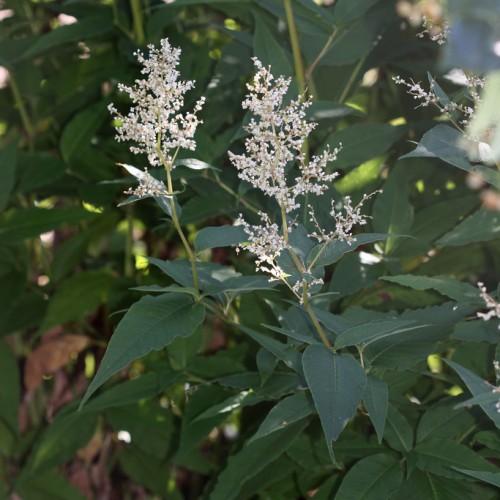
knotweed
Persicaria polymorpha
Cycle:
Herbaceous Perennial
Watering:
Average
Hardiness Zone:
4 - 9
Flowers:
Flowers
Sun:
Full sun
Leaf:
Yes
Growth Rate:
High
Maintenance:
Moderate
Drought Tolerant:
Yes
Salt Tolerant:
Yes
Invasive:
Yes
Care Level:
High
watering
Knotweed (Persicaria polymorpha) is a low-maintenance perennial that requires a moderate amount of water. During the warmer weeks (March - October), water the plant at least once a week, preferably early in the morning. Use a soaker hose to ensure uniform water distribution. During its winter dormancy (November - February), reduce watering to once every 2 - 3 weeks. If the temperature rises above 40 degrees Fahrenheit (4.4 degrees Celsius) during this period, however, provide a light watering to the plant if the soil feels dry. Knotweed does not require frequent fertilization, but an application of a balanced (10-10-10) fertilizer in the early spring can be beneficial. Too much fertilizer can damage this plant, however, so it should be used sparingly.
sunlight
Knotweed (Persicaria polymorpha) prefers full sun to partial shade in order to thrive. At least 6-8 hours of direct sunlight is ideal in order for the plant to flower and produce seeds. The best time for sunlight exposure is generally from morning sun at around 9am to afternoon sun at 4pm, when sun exposure is strongest. It should also be noted that Knotweed is somewhat tolerant of drought and will continue to grow in partial shade, but to reach its full potential, direct sunlight is essential.
pruning
Knotweed should be pruned in late winter or early spring to keep the plant healthy. Pruning will help to encourage strong shoots, and also help to remove any diseased or damaged parts of the plant. Prune knotweed back to about 4–5 inches above the soil. Be sure that no stem is left longer than 8 inches after pruning. Periodic light pruning throughout the growing season can also help to keep the plant compact and tidy. For more substantial pruning, wait until the plant enters dormancy in late fall or early winter.
